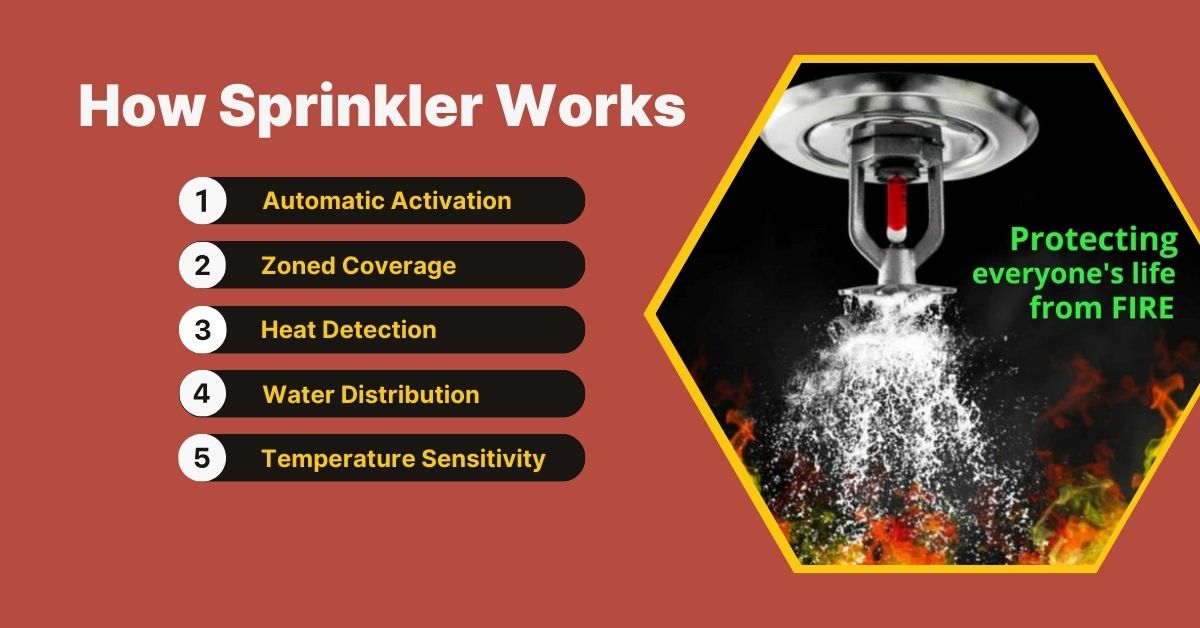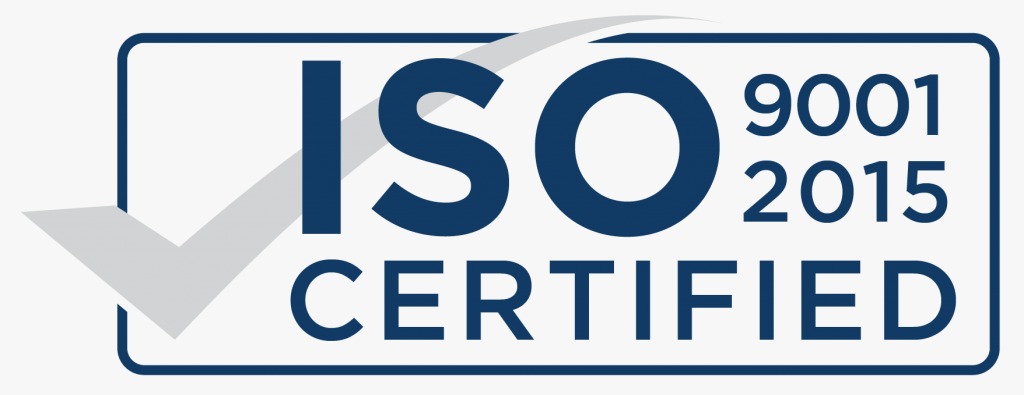Sprinkler systems play a critical role in fire safety. It’s like sprinklers work against fire incidents. It has been built with the capability to prevent the spread of fires and minimize damage. There is a broad scope to discuss briefly how does sprinkler system works and whether they can be beneficial for battling fire.
Sprinkler systems are highly beneficial for fire protection in buildings. Sprinkler systems work by automatically releasing water over a fire when the system detects the presence of heat. The critical components of a typical sprinkler system include pipes, sprinkler heads, a water supply, valves, and a control panel.
The sprinkler heads are strategically placed throughout the building, and the pipes connect them to the water supply. Valves control the flow of water, and the control panel monitors and activates the system. Let’s explore how a sprinkler system works and why it is beneficial, sprinkler types, installation, and maintenance.
Understanding- How Does Sprinkler System works
Sprinkler systems are automated watering solutions for fire suppression. They range from drip systems for targeted watering to widespread coverage options like spray or rotor systems, ensuring efficient and even water distribution.
Sprinkler systems are composed of a network of pipes, valves, and sprinkler heads. They are designed to activate when a preset temperature, indicative of a fire, is reached. The system then releases water directly onto the fire source, utilizing a mechanism that efficiently targets the affected area.
- Automatic Activation:
A sprinkler for fire safety works by design. An automatically activated system initiates the sprinkler after reaching a predetermined temperature level. Each sprinkler head is equipped with a heat-sensitive element, typically a glass bulb containing a liquid that expands when heated.
- Zoned Coverage:
The working process of sprinkler systems has dividers into zones, and only the sprinklers near the fire are activated. This targeted response helps minimize water damage to unaffected areas.
- Heat Detection:
A strategic design of the glass bulb in each sprinkler head enables it to shatter when exposed to heat from a fire. Once the bulb breaks, the control valve opens, allowing water to flow through the pipes and out of the activated sprinkler heads.
- Water Distribution:
A spray pattern of distributed water falls over the fire. The design of the sprinkler heads and the water pressure in the system help control the dispersion of water to combat the fire effectively.
- Temperature Sensitivity:
By default, an automatic activation occurs through the set-up of sprinklers at specific temperatures based on the heat associated with a potential fire. This ensures that the system responds to actual fire conditions while minimizing the likelihood of false activations.
Firefighting Mechanism
If it is said how does sprinkler system works for fire safety, then the answer goes to this point- “Upon detecting excessive heat, typically around 155-165°F, the sprinkler head activates, releasing water. The rapid response targets the fire’s base, significantly reducing its intensity and spread. This immediate action is crucial in controlling the fire until emergency services arrive. “
Benefits of sprinkler system
The primary advantages of sprinkler systems lies on fire suppression and safety. The others includes.
Quick Response:
Sprinkler systems rapidly respond to a fire, helping to contain or extinguish it before it can escalate. This quick reaction time is crucial for preventing the spread of fire and reducing property damage.
Life-Saving:
The primary goal of sprinkler systems is to protect life by suppressing the fire and creating a safer environment for building occupants to evacuate.
Minimized Property Damage:
By controlling the fire early in its development, sprinkler systems help minimize property damage. The targeted water distribution limits the water used and reduces the risk of extensive water damage.
24/7 Protection:
Sprinkler systems provide continuous, around-the-clock protection. They are always ready to respond to a fire, even when the building is unoccupied.
Building Code Compliance:
Many building codes and regulations require the installation of sprinkler systems in commercial and residential buildings. Building authority should understand and adhere to these regulations is crucial for legal compliance and ensure the safety standards of the occupants.
Insurance Premium Reduction:
Additionally, they can lead to reduced insurance premiums due to lowered risk. Thus insurance holder can save the cost.
Eco-Friendly:
By default design, sprinkler uses minimal water compared to traditional firefighting methods
Types of Sprinkler Systems
There are various types of sprinkler systems: wet pipe systems filled with water, dry pipe systems for freeze-prone areas, pre-action systems that prevent accidental discharge, and deluge systems for high-hazard areas. Each type is designed for specific environments and needs. Experts suggest that before deploying sprinkler check their suitability for various environments (e.g., residential, industrial, commercial).
- Dry Sprinkler System: A dry sprinkler system is designed for areas with freezing temperatures or where water may cause damage. It uses pressurized air or nitrogen instead of water in the pipes until a sprinkler head is activated. When a fire occurs, the air is released, allowing water to flow and extinguish the fire.
- Wet Pipe Sprinkler System: The most common type of sprinkler system, a wet pipe system, is always filled with water. When a sprinkler head detects heat, it opens, allowing water to flow onto the fire. This system provides quick response times and is suitable for most indoor environments with temperatures above freezing.
- Wet Sprinkler System: A wet sprinkler system refers to any system that utilizes water as the extinguishing agent, including both wet pipe systems and pre-action systems. It relies on the immediate availability of water to suppress and control fires in a building.
- Residential Fire Sprinkler System: Residential fire sprinkler systems are designed specifically for homes. They are typically connected to the main water supply and consist of sprinkler heads strategically placed throughout the house. When a fire is detected, the sprinkler heads activate, releasing water to extinguish the fire and protect the occupants.
- Lawn Sprinkler System: A lawn sprinkler system is used for irrigation purposes to water lawns and gardens. It consists of underground pipes and sprinkler heads that distribute water over the designated area. Lawn sprinkler systems can be automated or manually operated and are designed to ensure proper hydration for healthy plant growth.
Installation and Maintenance
Proper installation by professionals is crucial for system effectiveness. Regular maintenance, including inspections and testing, ensures the system remains in optimal working condition. Property owners should familiarize themselves with basic upkeep practices.
Myths and Misconceptions
Common myths include the belief that all sprinklers activate simultaneously or that smoke can trigger them. In reality, sprinklers typically activate individually and respond to heat, not smoke, thus minimizing unnecessary water damage.
Wrapping Up:
Overall, sprinkler systems are an effective and reliable means of fire protection. Their automatic activation, rapid response, and targeted water distribution make them a integral component in safeguarding both life and property in the event of a fire. Relevantly, the components of sprinkler sensors, pipes, and sprinkler heads are common parts that every model of sprinkler consists.
In the smart home automation, designers have structured sprinkler system for fire fighting to installing the solution in their homes or businesses at ease. It is suggested to purchase the sprinkler for fire protection from the brand which has various catalogue and easy installation process. After all provides reliable after sales support.
What are the different types of sprinkler heads used in fire sprinkler systems?
Fire sprinkler systems use various sprinkler heads, including upright, pendant, sidewall, and concealed charges. Each class is designed for specific applications and installation requirements, such as ceiling height and coverage area.
Are fire sprinkler systems effective in extinguishing fires?
Yes, fire sprinkler systems are highly effective in extinguishing fires. Studies have shown that they successfully suppress or extinguish fires in more than 90% of cases. Their early intervention can prevent fires from spreading and becoming unmanageable.
Can a fire sprinkler system cause water damage?
While fire sprinkler systems can result in some water damage, they are designed to minimize the damage caused by a fire. The amount of water released is typically far less than what would be used by fire department hoses, and the quick response of the system can limit the spread of fire and subsequent water damage.
Do all buildings require a fire sprinkler system by law?
The requirement for fire sprinkler systems varies by jurisdiction and the type of building. While some facilities, such as high-rises or commercial properties, may be legally mandated to have fire sprinkler systems, others, such as single-family homes, may have different requirements. It is important to consult local building codes and regulations for specific needs in a particular area.






Leave A Comment